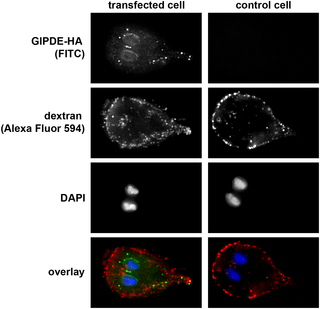PLOS Neglected Tropical Diseases ( IF 3.8 ) Pub Date : 2017-09-15 , DOI: 10.1371/journal.pntd.0005891 Stefan Kunz , Vreni Balmer , Geert Jan Sterk , Michael P. Pollastri , Rob Leurs , Norbert Müller , Andrew Hemphill , Cornelia Spycher

|
Background
Giardiasis is an intestinal infection correlated with poverty and poor drinking water quality, and treatment options are limited. According to the Center for Disease Control and Prevention, Giardia infections afflict nearly 33% of people in developing countries, and 2% of the adult population in the developed world. This study describes the single cyclic nucleotide-specific phosphodiesterase (PDE) of G. lamblia and assesses PDE inhibitors as a new generation of anti-giardial drugs.
Methods
An extensive search of the Giardia genome database identified a single gene coding for a class I PDE, GlPDE. The predicted protein sequence was analyzed in-silico to characterize its domain structure and catalytic domain. Enzymatic activity of GlPDE was established by complementation of a PDE-deficient Saccharomyces cerevisiae strain, and enzyme kinetics were characterized in soluble yeast lysates. The potency of known PDE inhibitors was tested against the activity of recombinant GlPDE expressed in yeast and against proliferating Giardia trophozoites. Finally, the localization of epitope-tagged and ectopically expressed GlPDE in Giardia cells was investigated.
Results
Giardia encodes a class I PDE. Catalytically important residues are fully conserved between GlPDE and human PDEs, but sequence differences between their catalytic domains suggest that designing Giardia-specific inhibitors is feasible. Recombinant GlPDE hydrolyzes cAMP with a Km of 408 μM, and cGMP is not accepted as a substrate. A number of drugs exhibit a high degree of correlation between their potency against the recombinant enzyme and their inhibition of trophozoite proliferation in culture. Epitope-tagged GlPDE localizes as dots in a pattern reminiscent of mitosomes and to the perinuclear region in Giardia.
Conclusions
Our data strongly suggest that inhibition of G. lamblia PDE activity leads to a profound inhibition of parasite proliferation and that GlPDE is a promising target for developing novel anti-giardial drugs.



























 京公网安备 11010802027423号
京公网安备 11010802027423号